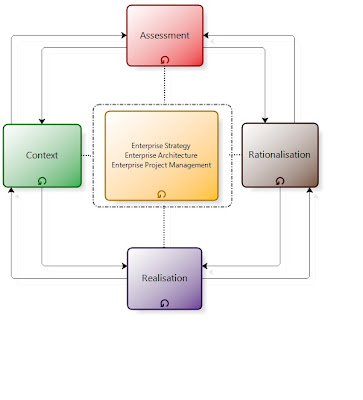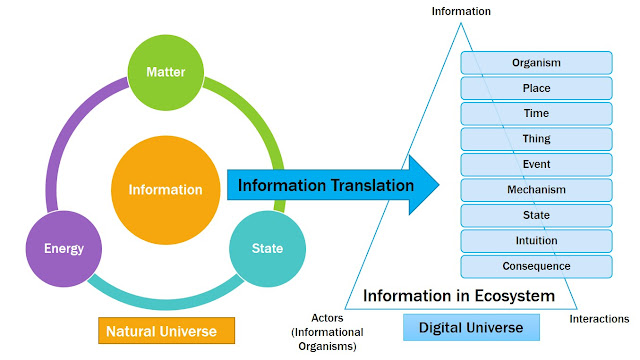Business Agility: Agile Business Transformation Framework, Part 2
Abstract: Enterprise Strategy, Architecture and Project Management are critical when making decisions about the assessment, adoption or de-adoption of emerging technologies for IT-enabled business transformation and agility (e.g. virtualisation, cloud, social media, BPM, mobile). However, the absence of agility and lack of integration between the enterprise strategy, enterprise architecture and project management can lead to slow and inconsistent technology assessment and adoption. The alpha version 2.0 of the integrated Agile Business Transformation framework (see Figure 1), introduced in a three-part article, is an attempt to address this problem and can be used to guide effective technology assessment, adoption and improvement.
Figure 1. Integrated Agile Business Transformation Framework (Copyright Dr. Asif Q. Gill 2012)
Introduction
Part 1 of this article discussed the agile business transformation and agile enterprise strategy (AES) aspects of this framework. The objective of Part 2 of this article is to discuss the agile enterprise architecture (AEA) aspect.
Agile Enterprise Architecture (AEA)
Agile enterprise architecture is about the iterative establishment and management of the business operating environment of an organisation in align with the enterprise strategy. The AEA presents a number of views to depict different aspects of an organisation’s business operating environment. The AEA represents organisation-as-a-whole concept, which includes one or many business operating environments. Business operating environment includes Business, Technology Operating Environment, Lifecycle and Knowledge-base that have been identified based on the review of TOGAF and empirical research results through the lens of Agility, Actor-Network and Supply-Chain theories.
This framework is an attempt to integrate enterprise strategy and architecture to facilitate the strategic assessment and adoption or de-adoption of technology in response to the constantly changing Business “Demand”. Any changes to enterprise architecture Supply-Chain should be driven by enterprise strategy (e.g. “Demand” and “Contract”). Agile Enterprise Strategy and Agile Enterprise Architecture are linked with the two-way feedback loops and limit or inform each other. This will ensure the true business-IT alignment when making decisions about the strategic assessment, adoption or de-adoption of emerging technologies for IT-enabled business transformation and agility. Agile Enterprise Strategy and Agile Enterprise Architecture would lead to “Agile Enterprise”.




I like what you have done here, I've tried to write a business friendly approach to something along these lines in the following:
ReplyDeletehttp://mbaoutcome.blogspot.com/2012/08/enterprise-architecture-and-road-to.html
I'd be interested in your feedback.
Thanks Joshua. I am looking at your article and really like the idea of "Enterprise Intelligence".
ReplyDeleteThis is very good information.i think it's useful advice. really nice blog. keep it up!!!
ReplyDeleteenterprise architecture
We can get to learn through the help of workshops that we appropriately we can perform things because finally its all about the statistics that we get to perform, Most of the times agile business solutions are there to be performed and at the same time the way in which it helps us with learning certainly.
ReplyDelete